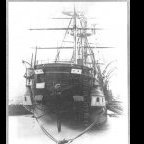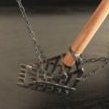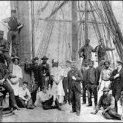-
Posts
3,867 -
Joined
-
Last visited
Reputation Activity
-
 KeithAug got a reaction from Canute in HMS Lion by Ian_Grant - 1/150 - RADIO - RESTORATION - WW1 Battlecruiser
KeithAug got a reaction from Canute in HMS Lion by Ian_Grant - 1/150 - RADIO - RESTORATION - WW1 Battlecruiser
I am very anti 3d printing, basically because I'm too lazy to learn how to use it. If I can get over this hurdle I am going to become its number 1 advocate.🙂
-
 KeithAug got a reaction from Canute in Santos Dumont No. 18 Hydroplane 1907 by Greg Davis - FINISHED - Scale 1:16
KeithAug got a reaction from Canute in Santos Dumont No. 18 Hydroplane 1907 by Greg Davis - FINISHED - Scale 1:16
Thank you Keith - I couldn't see it either.
-
 KeithAug got a reaction from FriedClams in Lancha Chilota by JacquesCousteau - FINISHED – Scale 1:32 – Chilean Coasting Sloop
KeithAug got a reaction from FriedClams in Lancha Chilota by JacquesCousteau - FINISHED – Scale 1:32 – Chilean Coasting Sloop
What sort of cargo would she typically carry? It would be nice to try and show it.
-
 KeithAug got a reaction from Keith Black in Lancha Chilota by JacquesCousteau - FINISHED – Scale 1:32 – Chilean Coasting Sloop
KeithAug got a reaction from Keith Black in Lancha Chilota by JacquesCousteau - FINISHED – Scale 1:32 – Chilean Coasting Sloop
What sort of cargo would she typically carry? It would be nice to try and show it.
-
 KeithAug reacted to John Ruy in SS Klondike II by John Ruy - 1/8” = 1’ (1/96 scale) - Sternwheeler Riverboat
KeithAug reacted to John Ruy in SS Klondike II by John Ruy - 1/8” = 1’ (1/96 scale) - Sternwheeler Riverboat
Yep… She still has some “Pain in the Glute” but is doing well. Thanks for asking.
-
 KeithAug reacted to JacquesCousteau in Lancha Chilota by JacquesCousteau - FINISHED – Scale 1:32 – Chilean Coasting Sloop
KeithAug reacted to JacquesCousteau in Lancha Chilota by JacquesCousteau - FINISHED – Scale 1:32 – Chilean Coasting Sloop
Thanks, Keith!
I'm considering options for how to handle the hatches. For the fore hatch, I'm fine leaving the interior empty. In actual lanchas, the space ahead of the mast was used for a heating stove and as shelter for the crew, with very minimal furnishings. The hatch opening is small, and with the hatch propped open as below, it's covered enough that it doesn't bring attention to the lack of detail below deck. I should note that the prop is just a bit of notched scrap, and it will be replaced. It also fell in the hatch twice.
The main hatch is trickier. If it's open just a crack, the interior looks empty, unless there's direct light, in which case the central spine is very visible, as seen below:
I rolled up some tape to test options to cover the spine. First, a barrel from the Syren barrel kit, which I made a while ago for the canoa but didn't end up using. I don't think this looks particularly convincing.
I also chopped up a very rough coffee stir stick to try to simulate a shipment of lumber. Unfortunately, it looks a bit odd to only have it in the middle of the hold, and it's pretty visible how it just ends when it reaches the bulkhead, spoiling the illusion of a cargo load.
So, I'm considering either closing the main hatch, or just adding a flat piece of wood painted black extending from the spine top out to the sides, so that it will just look uniformly black inside.
I also started drilling holes in the keel for the mounting. I'm still leaning toward displaying the model upright, and would need to prep this now before anything is glued to the topsides, but the holes will not be very noticeable if I end up displaying the model resting on its bilge. Drilling was done very carefully, slowly ramping up in size, and regularly checking that everything was perpto the keel.
Despite this, it ended up slightly off from perfect, but I don't think it's anything that's beyond the normal slight give of brass piping.
Finally, I applied a sealer to the hull below the wales, in preparation for painting.
-
 KeithAug got a reaction from Greg Davis in Santos Dumont No. 18 Hydroplane 1907 by Greg Davis - FINISHED - Scale 1:16
KeithAug got a reaction from Greg Davis in Santos Dumont No. 18 Hydroplane 1907 by Greg Davis - FINISHED - Scale 1:16
Thank you Keith - I couldn't see it either.
-
 KeithAug reacted to Dr PR in USS Cape (MSI-2) by Dr PR - 1:48 - Inshore Minesweeper
KeithAug reacted to Dr PR in USS Cape (MSI-2) by Dr PR - 1:48 - Inshore Minesweeper
Austin,
Thanks.
I would appreciate any photos you want to send. The sort of things I will be researching is the planking on the bow forward of the deck house, any evidence of a bell or flag bag on the aft side of the O1 level deck house forward of the funnel, etc. Anything that looks original. And I would like to see what you have done with the open bridge and pilot house.
I can't find anything in the blueprints about wooden pegs in the planking, so that might have been done some time after the ship was built.
However, I do have a hypothesis based upon the photos you sent. The hull originally had double layer planking for the entire hull, but it had a third layer of 3/4 inch red oak planking from 11 feet above the base line (about even with the discharge ports right above the waterline) down to the keel. This outer layer, or sheathing, was attached with 1 1/2 inch long No. 16 flat head wood screws spaced on 4 1/2 inch centers. These screws have a shaft about 1/4 inch diameter.
In your photos I don't see any of this sheathing aft of the section of horizontal planking on the hull at the bow that provides protection from the anchor when it is being handled. It looks like most of this third layer of sheathing has been removed. If so, the screw holes in the remaining planking might have been filled with wooden pegs.
-
 KeithAug reacted to Greg Davis in Santos Dumont No. 18 Hydroplane 1907 by Greg Davis - FINISHED - Scale 1:16
KeithAug reacted to Greg Davis in Santos Dumont No. 18 Hydroplane 1907 by Greg Davis - FINISHED - Scale 1:16
here it is - I hope you can see it now!
-
 KeithAug got a reaction from mtaylor in USS Cape (MSI-2) by Dr PR - 1:48 - Inshore Minesweeper
KeithAug got a reaction from mtaylor in USS Cape (MSI-2) by Dr PR - 1:48 - Inshore Minesweeper
Great progress Phil and the stem looks wonderful. I too have abandoned the pencil attached to a sick method, the laser level makes it so much easier. Unlike you I have ditched the pencil altogether. I now lay the masking tape directly to the laser line. I find it works very well.
-
 KeithAug got a reaction from Canute in Santos Dumont No. 18 Hydroplane 1907 by Greg Davis - FINISHED - Scale 1:16
KeithAug got a reaction from Canute in Santos Dumont No. 18 Hydroplane 1907 by Greg Davis - FINISHED - Scale 1:16
Well worth the effort Greg - they look amazing. Great progress and attention to detail.
-
 KeithAug got a reaction from FriedClams in Cangarda 1901 by KeithAug - Scale 1:24 - Steam Yacht
KeithAug got a reaction from FriedClams in Cangarda 1901 by KeithAug - Scale 1:24 - Steam Yacht
Veszett - Natural wood. Although above the waterline is a little more uncertain at the moment.
Phil / Keith - your passion for detail is a constant source of wonderment.
-
 KeithAug reacted to Keith Black in Cangarda 1901 by KeithAug - Scale 1:24 - Steam Yacht
KeithAug reacted to Keith Black in Cangarda 1901 by KeithAug - Scale 1:24 - Steam Yacht
Phil, from what I read it seems that zinc anodes being frowned upon for wood hulls is recent. Someone wrote that the zinc anodes should be removed and the wood soaked in vinegar or if too badly damaged, replaced. I'm new to this topic so all I've got to go on is Mr Google. Up till a couple of hours ago I didn't even know how to spell zinc.
-
 KeithAug reacted to Dr PR in Cangarda 1901 by KeithAug - Scale 1:24 - Steam Yacht
KeithAug reacted to Dr PR in Cangarda 1901 by KeithAug - Scale 1:24 - Steam Yacht
Keith B,
Interesting! The blueprints for the MSI specify zinc protectors, but they were mounted to the wood with phosphor bronze or galvanized brass straps. No mounting hardware through the zincs. And the zincs were to be embedded in zinc oxide paste and caulked all around to keep out sea water.
So it looks like they were trying to minimize contact between the zinc and wood. I guess the zincs were the "least of two weevils" when it came to deterioration of parts of the ship.
-
 KeithAug reacted to Keith Black in Cangarda 1901 by KeithAug - Scale 1:24 - Steam Yacht
KeithAug reacted to Keith Black in Cangarda 1901 by KeithAug - Scale 1:24 - Steam Yacht
https://forums.ybw.com/threads/beware-anode-advice.543843/
https://waitematawoodys.com/2015/05/15/electrochemical-damage-to-wood-the-marine-version-of-leaky-homes/
https://waitematawoodys.com/?s=electrochemical&submit=Searc
Yes, zinc anodes are generally considered bad for wooden boats because they can cause significant damage to the wood due to overprotection, creating a caustic environment around the anode that can rot the wood fibers, especially when connected to metal fittings on the boat; most experts recommend avoiding zinc anodes on wooden hulls and opting for alternative options like aluminum anodes if necessary. Key points about zinc anodes and wooden boats: Electrolysis damage: When a zinc anode is attached to a wooden boat with metal fittings, the electrical current generated can cause the wood around the metal parts to deteriorate due to the chemical reaction with the saltwater. Overprotection: Zinc anodes tend to produce a higher voltage than needed for wooden boats, leading to excessive corrosion protection that can damage the wood. Caustic environment: The reaction between zinc and saltwater creates a caustic environment around the anode, which can rapidly degrade wood fibers. Alternatives for wooden boats: Aluminum anodes: Some boat owners choose aluminum anodes as they can provide adequate protection without causing the same level of damage to wood. Careful selection and placement: If you do use any anode on a wooden boat, carefully select the right type and position it to minimize contact with the wood and potential damage. -
 KeithAug reacted to Dr PR in Cangarda 1901 by KeithAug - Scale 1:24 - Steam Yacht
KeithAug reacted to Dr PR in Cangarda 1901 by KeithAug - Scale 1:24 - Steam Yacht
I am working on a wooden minesweeper model - wooden hull, wooden superstructure, etc. However, it did have non-wooden engines, pumps, plumbing, propeller, rudder, etc. And these metals could have galvanic reactions with salt water. For that reason, there were zinc anodes on the hull around the main water intakes and near the propeller and rudder.
-
 KeithAug reacted to Veszett Roka in Cangarda 1901 by KeithAug - Scale 1:24 - Steam Yacht
KeithAug reacted to Veszett Roka in Cangarda 1901 by KeithAug - Scale 1:24 - Steam Yacht
A bit more seriously: what are you planning below the waterline? Any antifouling, perhaps white or green like the original? Keep the hull unpainted? Also, some marking on the hull, like Plimsoll mark etc.?
-
 KeithAug got a reaction from FriedClams in Cangarda 1901 by KeithAug - Scale 1:24 - Steam Yacht
KeithAug got a reaction from FriedClams in Cangarda 1901 by KeithAug - Scale 1:24 - Steam Yacht
Veszett, they are anti shipworm anodes.
-
 KeithAug got a reaction from mikegr in Cangarda 1901 by KeithAug - Scale 1:24 - Steam Yacht
KeithAug got a reaction from mikegr in Cangarda 1901 by KeithAug - Scale 1:24 - Steam Yacht
Thank you Pat, Rick, John, Keith, Druxey, Veszett and Ian - and of course the rest of you have liked my work.
Yes Ian - I still use the old stinky stuff but still managed 14 coats - however see below!😬
Rick - very thin to ease cutting - about 0.010"
I set about making the anodes of which Canada has 14.
I wanted to give them a bit of shape so I decided to try pressing them. I started by making a press tool from mild steel. This was partially milled and finished by hand filing.
I used the machine vice as a press.
With a bit of cleaning up the first one turned out acceptable.
The pressed metal was quite soft - it is actually an old decoration that used to be a Christmas decoration. I think it might actually be a zinc alloy which seems quite appropriate.
Here are all 14.
All were drilled with 2 holes to take the mounting bolts. The slotted piece of wood is a crude locating jig to make drilling quicker.
The keel was drilled through to take the anodes (symmetrical on either side)
Then glued and screwed in place.
The anodes are spaced equidistant along the keel - so again I made a simple jig to assist drilling of the holes.
I then used my previously made jig to drill the stabiliser holes. I always put off drilling holes in the hull - I think it is fear. You can see the jig has been modified to give better angular control of the drill. The Jig was taped securely to the hull and the holes were drilled with my heavy duty hand drill.
All was well.
Fortunately no damage to the paintwork ---------- but then ! succumbed and 2 more coats of Poly went on. Compulsive or what!!!!!!
Ant then another go with the super fine wire wool.
Somehow the final 2 coats seemed to help. The sheen was quite subdued and the finish was reasonably uniform which pleased me.
The next job is making the stabilisers and thereafter masking up for the spray paint job.
That's all for now so back to catching up with all your builds.
-
 KeithAug got a reaction from FriedClams in Cangarda 1901 by KeithAug - Scale 1:24 - Steam Yacht
KeithAug got a reaction from FriedClams in Cangarda 1901 by KeithAug - Scale 1:24 - Steam Yacht
Thank you Pat, Rick, John, Keith, Druxey, Veszett and Ian - and of course the rest of you have liked my work.
Yes Ian - I still use the old stinky stuff but still managed 14 coats - however see below!😬
Rick - very thin to ease cutting - about 0.010"
I set about making the anodes of which Canada has 14.
I wanted to give them a bit of shape so I decided to try pressing them. I started by making a press tool from mild steel. This was partially milled and finished by hand filing.
I used the machine vice as a press.
With a bit of cleaning up the first one turned out acceptable.
The pressed metal was quite soft - it is actually an old decoration that used to be a Christmas decoration. I think it might actually be a zinc alloy which seems quite appropriate.
Here are all 14.
All were drilled with 2 holes to take the mounting bolts. The slotted piece of wood is a crude locating jig to make drilling quicker.
The keel was drilled through to take the anodes (symmetrical on either side)
Then glued and screwed in place.
The anodes are spaced equidistant along the keel - so again I made a simple jig to assist drilling of the holes.
I then used my previously made jig to drill the stabiliser holes. I always put off drilling holes in the hull - I think it is fear. You can see the jig has been modified to give better angular control of the drill. The Jig was taped securely to the hull and the holes were drilled with my heavy duty hand drill.
All was well.
Fortunately no damage to the paintwork ---------- but then ! succumbed and 2 more coats of Poly went on. Compulsive or what!!!!!!
Ant then another go with the super fine wire wool.
Somehow the final 2 coats seemed to help. The sheen was quite subdued and the finish was reasonably uniform which pleased me.
The next job is making the stabilisers and thereafter masking up for the spray paint job.
That's all for now so back to catching up with all your builds.
-
 KeithAug got a reaction from Ian_Grant in Cangarda 1901 by KeithAug - Scale 1:24 - Steam Yacht
KeithAug got a reaction from Ian_Grant in Cangarda 1901 by KeithAug - Scale 1:24 - Steam Yacht
Veszett, they are anti shipworm anodes.
-
 KeithAug got a reaction from Keith Black in Cangarda 1901 by KeithAug - Scale 1:24 - Steam Yacht
KeithAug got a reaction from Keith Black in Cangarda 1901 by KeithAug - Scale 1:24 - Steam Yacht
Veszett, they are anti shipworm anodes.
-
 KeithAug reacted to Keith Black in Cangarda 1901 by KeithAug - Scale 1:24 - Steam Yacht
KeithAug reacted to Keith Black in Cangarda 1901 by KeithAug - Scale 1:24 - Steam Yacht
That kinda depends, Keith. How much mahogany dinning room furniture you got left?
-
 KeithAug got a reaction from Glen McGuire in Cangarda 1901 by KeithAug - Scale 1:24 - Steam Yacht
KeithAug got a reaction from Glen McGuire in Cangarda 1901 by KeithAug - Scale 1:24 - Steam Yacht
Thank you Pat, Rick, John, Keith, Druxey, Veszett and Ian - and of course the rest of you have liked my work.
Yes Ian - I still use the old stinky stuff but still managed 14 coats - however see below!😬
Rick - very thin to ease cutting - about 0.010"
I set about making the anodes of which Canada has 14.
I wanted to give them a bit of shape so I decided to try pressing them. I started by making a press tool from mild steel. This was partially milled and finished by hand filing.
I used the machine vice as a press.
With a bit of cleaning up the first one turned out acceptable.
The pressed metal was quite soft - it is actually an old decoration that used to be a Christmas decoration. I think it might actually be a zinc alloy which seems quite appropriate.
Here are all 14.
All were drilled with 2 holes to take the mounting bolts. The slotted piece of wood is a crude locating jig to make drilling quicker.
The keel was drilled through to take the anodes (symmetrical on either side)
Then glued and screwed in place.
The anodes are spaced equidistant along the keel - so again I made a simple jig to assist drilling of the holes.
I then used my previously made jig to drill the stabiliser holes. I always put off drilling holes in the hull - I think it is fear. You can see the jig has been modified to give better angular control of the drill. The Jig was taped securely to the hull and the holes were drilled with my heavy duty hand drill.
All was well.
Fortunately no damage to the paintwork ---------- but then ! succumbed and 2 more coats of Poly went on. Compulsive or what!!!!!!
Ant then another go with the super fine wire wool.
Somehow the final 2 coats seemed to help. The sheen was quite subdued and the finish was reasonably uniform which pleased me.
The next job is making the stabilisers and thereafter masking up for the spray paint job.
That's all for now so back to catching up with all your builds.
-
 KeithAug got a reaction from davyboy in Cangarda 1901 by KeithAug - Scale 1:24 - Steam Yacht
KeithAug got a reaction from davyboy in Cangarda 1901 by KeithAug - Scale 1:24 - Steam Yacht
Thank you Pat, Rick, John, Keith, Druxey, Veszett and Ian - and of course the rest of you have liked my work.
Yes Ian - I still use the old stinky stuff but still managed 14 coats - however see below!😬
Rick - very thin to ease cutting - about 0.010"
I set about making the anodes of which Canada has 14.
I wanted to give them a bit of shape so I decided to try pressing them. I started by making a press tool from mild steel. This was partially milled and finished by hand filing.
I used the machine vice as a press.
With a bit of cleaning up the first one turned out acceptable.
The pressed metal was quite soft - it is actually an old decoration that used to be a Christmas decoration. I think it might actually be a zinc alloy which seems quite appropriate.
Here are all 14.
All were drilled with 2 holes to take the mounting bolts. The slotted piece of wood is a crude locating jig to make drilling quicker.
The keel was drilled through to take the anodes (symmetrical on either side)
Then glued and screwed in place.
The anodes are spaced equidistant along the keel - so again I made a simple jig to assist drilling of the holes.
I then used my previously made jig to drill the stabiliser holes. I always put off drilling holes in the hull - I think it is fear. You can see the jig has been modified to give better angular control of the drill. The Jig was taped securely to the hull and the holes were drilled with my heavy duty hand drill.
All was well.
Fortunately no damage to the paintwork ---------- but then ! succumbed and 2 more coats of Poly went on. Compulsive or what!!!!!!
Ant then another go with the super fine wire wool.
Somehow the final 2 coats seemed to help. The sheen was quite subdued and the finish was reasonably uniform which pleased me.
The next job is making the stabilisers and thereafter masking up for the spray paint job.
That's all for now so back to catching up with all your builds.








